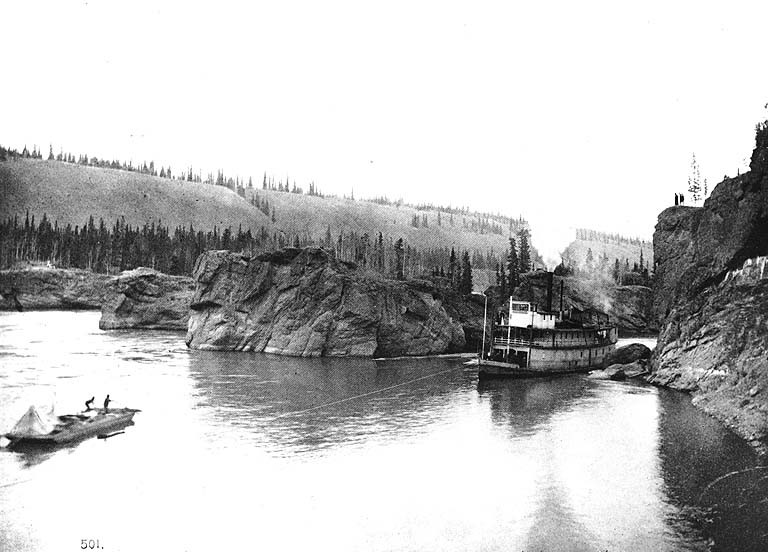Lining (steamboat) on:
[Wikipedia]
[Google]
[Amazon]
 Lining was a method used by steamboats to move up river through rapids. Lining could also be used to lower steamboats through otherwise impassible falls.
Lining was a method used by steamboats to move up river through rapids. Lining could also be used to lower steamboats through otherwise impassible falls.
''The Ruth'', 178 Fed. Rptr. 749 (District Ct. of Oregon 1910).
(accessed 07-11-11).
 Lining was a method used by steamboats to move up river through rapids. Lining could also be used to lower steamboats through otherwise impassible falls.
Lining was a method used by steamboats to move up river through rapids. Lining could also be used to lower steamboats through otherwise impassible falls.
Technique
Lining involved running a rope, called aline
Line most often refers to:
* Line (geometry), object with zero thickness and curvature that stretches to infinity
* Telephone line, a single-user circuit on a telephone communication system
Line, lines, The Line, or LINE may also refer to:
Arts ...
or a steel cable to a secure point on shore, typically a large tree or a bolt specially set in a rock, and then wrapping the cable around a steam-powered winch on the boat. The winch would then crank in the cable, if the vessel was going upstream, or gradually let out the cable, if the vessel was headed downstream.
Use on the Willamette River
Along the Willamette River, in the first decades of the 1900s, the most dangerous obstacles to navigation wereWillamette Falls
The Willamette Falls is a natural waterfall on the Willamette River between Oregon City and West Linn, Oregon, in the United States. It is the largest waterfall in the Northwestern United States by volume, and the seventeenth widest in the wor ...
and the Clackamas Rapids. Since 1873 locks
Lock(s) may refer to:
Common meanings
*Lock and key, a mechanical device used to secure items of importance
*Lock (water navigation), a device for boats to transit between different levels of water, as in a canal
Arts and entertainment
* ''Lock ...
at Oregon
Oregon () is a U.S. state, state in the Pacific Northwest region of the Western United States. The Columbia River delineates much of Oregon's northern boundary with Washington (state), Washington, while the Snake River delineates much of it ...
allowed navigation around Willamette Falls, but as late as 1907, lining was still required to pass the Clackamas Rapids, which were located north of Oregon City, near the mouth of the Clackamas River
The Clackamas River is an approximately tributary of the Willamette River in northwestern Oregon, in the United States. Draining an area of about , the Clackamas flows through mostly forested and rugged mountainous terrain in its upper reaches, a ...
.
Hazards
Lining was dangerous, as it was only the single cable that prevented the vessel from being washed downstream and likely wrecked. Any use of a cable on board a vessel was also hazardous to the crew. On October 15, 1907, at 8:30 am, while ''Oregona'' was lining through Clackamas Rapids, the lining cable became tangled in the sternwheel of a nearby steamer, the ''Ruth''. A deckhand on ''Oregona'', Virgil K. Pollard, was caught in a loop of the cable, which tightened around his legs, severing both legs six inches (15 cm) above the ankles. The injured deckhand brought a legal action against the ''Ruth''. When the case was presented to U.S. District Court JudgeRobert S. Bean
Robert Sharp Bean (November 28, 1854 – January 7, 1931) was the 16th Chief Justice of the Oregon Supreme Court, serving as Chief Justice three different times. He later served as a United States district judge of the United States District Cour ...
, he ruled that accident was held to be the fault of the ''Ruth'', for ignoring the warning signals of the ''Oregona'' to stand away while the deckhand was engaged in coiling the cable which was still paid out from the ''Oregona'' following an unsuccessful lining attempt. Judge Bean awarded the deckhand, who was 19 years of age at the time of the accident, $12,000 in damages.(accessed 07-11-11).
Notes
References
* {{cite book , author1-last = Affleck , author1-first = Edward L. , title = A Century of Paddlewheelers in the Pacific Northwest, the Yukon, and Alaska , isbn =0-920034-08-X , location = Vancouver, BC , publisher = Alexander Nicholls Press , date = 2000 Steamboats